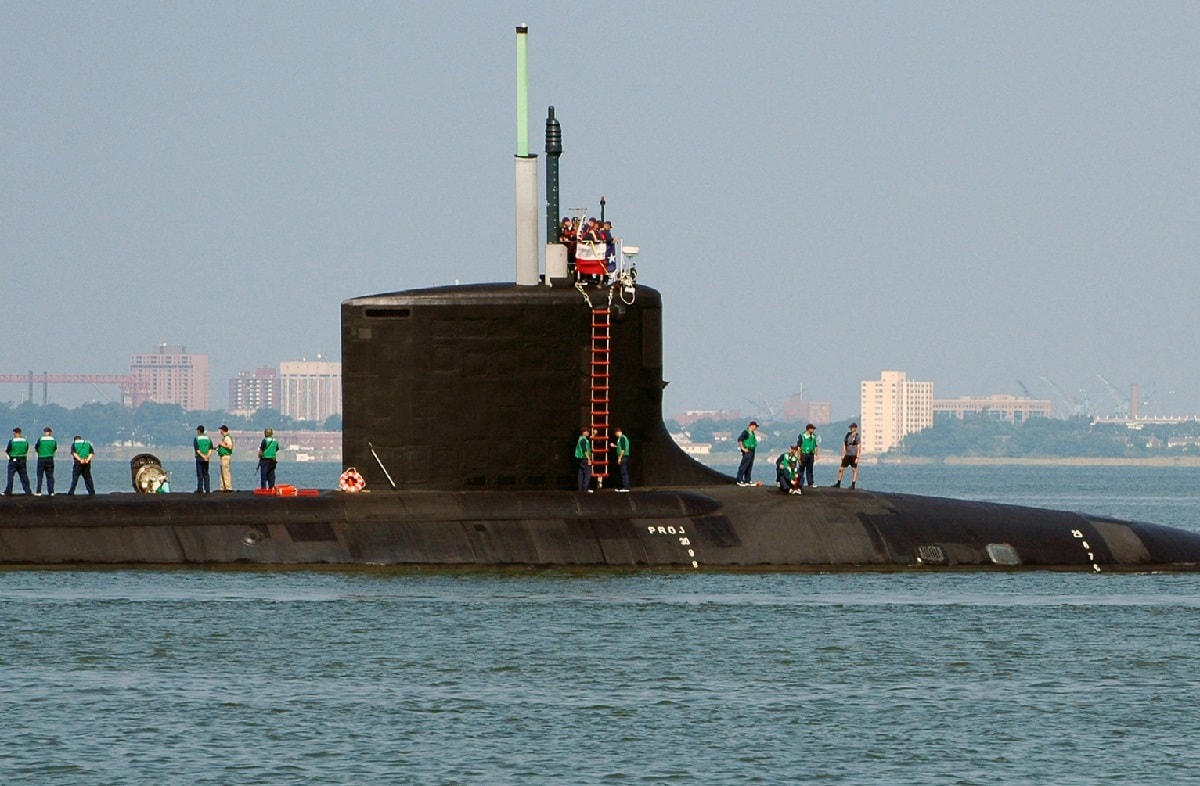At last weekend’s Shangri-La Dialogue defense summit in Singapore, Australian Defence Minister Richard Marles suggested that the trilateral Australia-UK-U.S. partnership to deliver a fleet of up to eight nuclear-powered submarines to Australia was created as a transparent initiative. Marles then suggested that Beijing was not as open about its own nuclear and military expansion.
“Australia having this capability will provide balance in the region. That is important in terms of deterrence, that is important in terms of providing pathways to peace,” Marles told CNBC on Saturday.
“But the biggest issue and the biggest difference is there is complete strategic transparency in terms of Australia’s actions of why we are acquiring the capabilities … we are making clear to the region it’s about making our contribution to the collective security.”
He went on to suggest this is very different from what is now seen “in terms of the military build-up of China.”
However, Senior Colonel Zhao Xiaozhuo of the Chinese People’s Liberation Army (PLA) Academy of Military Sciences countered that Beijing’s position is to “ban and destroy” such nuclear weapons.
“We don’t actively focus on nuclear power weapons, we don’t provide [nuclear building] assistance to other countries. It’s a clear attitude from China,” Zhao said, adding the superpower believes in maintaining regional peace. “You talk about major power competition in the Asia-Pacific region – all of you understand why we all face pressures because for many years, we have had no wars in the region. Who really wants to cook up trouble? It is our hope to maintain peace in this region.”
China May Have an Edge
In addition to China’s continued secrecy of its naval build-up, another issue is that Beijing may lead research in 19 of 23 technologies that have been set as priorities in the AUKUS program. This includes hypersonic weapons, electronic warfare, and undersea drones – further underscoring the need for the Western allies to pool their research.
That was the finding from the Australian Strategic Policy Institute (ASPI), which on Tuesday released the results of a survey of around two million of the world’s top science papers that found that China leads research in most of the technologies that could be required as the Pillar 2 of the program.
“Much of the AUKUS discussion to date has focused on Pillar 1, the trilateral effort to support Australia acquiring conventionally armed, nuclear-powered submarines,” ASPI reported.
“Yet achieving Pillar 2, the technology programs, is arguably both of greater long-term value and more strategically challenging. Pillar 2 aims to enhance the US, UK and Australia’s technological edge—and, implicitly, to counter China’s technological advancements—by pooling resources in advanced military capability areas such as artificial intelligence, quantum computing, cyber technology, undersea capabilities, hypersonics and counter-hypersonics, electronic warfare, and information-sharing,” ASPI further added.
The new AUKUS Pillar 2 focused research ranked 23 technologies – seven of them new to the Tech Tracker – that in the group’s view will be highly relevant to the Pillar 2 advanced capability areas. The AUKUS-related findings revealed an even starker gap between countries than in its original findings but also noted that a slightly larger grouping of countries could improve the AUKUS efforts.
“AUKUS is a technology-sharing agreement, rather than a military alliance. It does not necessarily preclude its members from collaborating—individually or collectively—on accelerated tech development or transfer with traditional Five Eyes partners such as Canada (top 10 in 15 of the 24 technologies) or more recent groupings such as the Quad (Japan’s strengths lie in hypersonics and quantum technologies, while India sits in the top 10 for all 24 technologies),” ASPI further found.
Perhaps AUKUS could be expanded – at least with Canada (CAUKUS) or Japan (JAUKUS) to counter China’s head start in technology
Author Experience and Expertise
A Senior Editor for 19FortyFive, Peter Suciu is a Michigan-based writer. He has contributed to more than four dozen magazines, newspapers, and websites with over 3,200 published pieces over a twenty-year career in journalism. He regularly writes about military hardware, firearms history, cybersecurity, politics, and international affairs. Peter is also a Contributing Writer for Forbes and Clearance Jobs. You can follow him on Twitter: @PeterSuciu.
From 19FortyFive
Ukraine Footage Shows U.S. M982 ‘Excalibur’ Cut Through Russian Artillery
How To Sink A $3 Billion Dollar Submarine: Leave A Hatch Open
Smashed To Pieces: Video Shows Ukraine Hitting Russian Air Defenses

